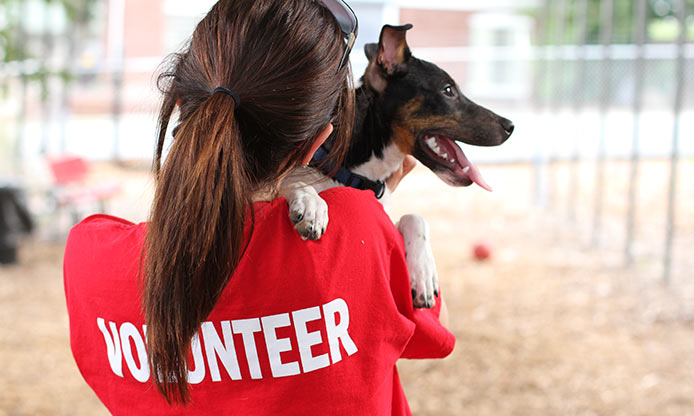If you are an animal lover, do not be deterred from helping out at your local shelter simply because you are not sure how to most effectively donate your time or resources. There are a myriad ways in which you can make a tangible difference in the lives of hundreds or thousands of animals. Whether it’s doing the hands-on work such as walking the shelter’s dogs or organizing a fundraising event, there is surely a volunteer job that suits your passions, skills, and schedule.
Why
Animal shelters often come to mind when you are thinking about getting a new pet. However, don’t forget about them after your pet joins your family as these organizations need your help remaining open to provide great homes for millions of lost and abandoned pets. In addition to providing safe and comfortable homes to these animals, these shelters also carry the responsibilities of cleaning and evaluating every new pet that makes their way to the facilities.
Furthermore, the shelters need to look for microchips, potty train, and complete other tasks necessary to maintain the wellbeing of these animals. Doing all this is a lot to ask for any organization, especially one dependent on the donations of others.
Ask any animal shelter volunteer and they will tell you how their experience proved to be mutually beneficial. Not only are you helping these troubled animals find safe new homes, but you are exposed to other individuals who also share your passion for animals. Additionally, it’s a great way to stay active, boost your mental health, and gain meaningful experience to put on your college application.
How
First things first, you need to learn about the animal shelters that are located in your area. Find and explore their websites to learn about the shelter’s philosophies, practices, and volunteer opportunities. You will also be able to gauge how much of a time commitment each opportunity requires.
Next, be sure to visit the shelter in person and ask an employee any questions you may have thought of after completing your initial research. If you find a shelter that is a great fit, go ahead and fill out an application. They are typically straightforward, but often do require a photo ID, birth certificate, and background check.
Upon acceptance to your organization, you will most likely be invited to a training session before your official start date. Sessions typically include hands-on instructions, a tour of the facilities, and getting to know your fellow volunteers and the shelter staff.
You are also going to need to determine the days, weeks, and hours that will work for your professional, personal, or academic schedule. Talk to the shelter and ensure that both you and the organization are on the same page regarding when you will show up and what work you will be completing. The next part is the easiest and most rewarding aspect of this process as you get to spend time with the animals and make a real difference in their lives.
